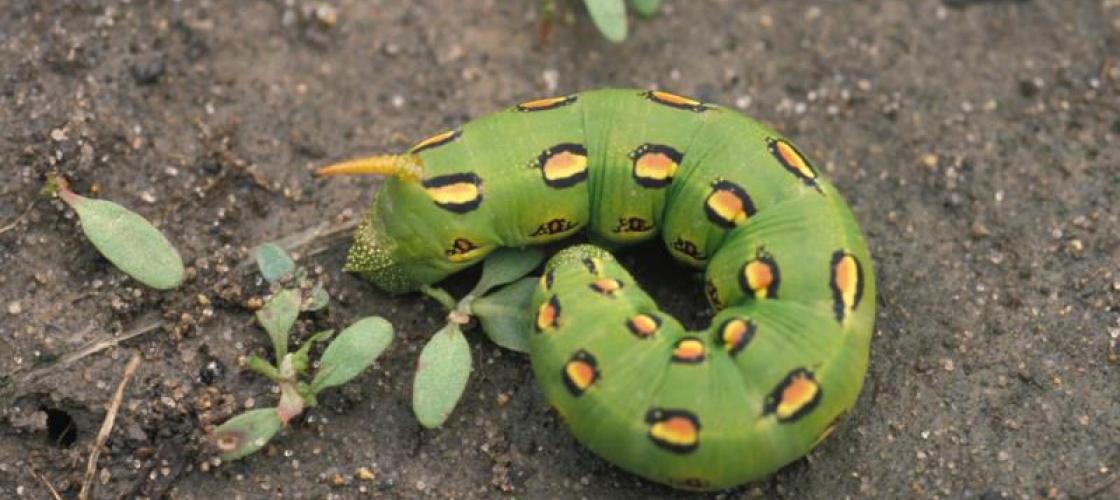Fast flyers are winging through early morning fields and around porch lights after dusk. Sphinx moths are designed for rapid flight. Shaped like an airplane, they can clock speeds just over 30 miles per hour. They’re also known as hawk or hummingbird moths for their similar flight patterns. Various sphinx moths have been mistaken for bats and bees.
Some can hover like hummingbirds while feeding. Sphinx moths have the world’s longest tongue among moths and butterflies. They’re able to draw nectar from narrow, tubular flowers that are too deep for bees to reach. When not in use, the tongue rolls up. Many of the moths are a mottled brown, but some have very colorful wing patterns. The white-lined sphinx is fashionably aligned with the pantone color of the year, which for 2019 is coral.
The caterpillars are large and colorful with a small horn at the rear and strong stubby legs that clamp onto plants. The caterpillars are known as hornworms. Hornworms at rest on a branch often resemble the shape of a sphinx, hence the name for the moth.
See if you can spot these hornworms feeding or hear the hum of giant sphinx moths hovering in late summer.
The Peculiar Sphinx Moth
- Sphinx moths are strong fliers and can go almost anywhere. Many are attracted to lights at night. In the morning, you may find one or two resting on the side of your house where a light shined all night. You may also be able to tempt sphinx moths with a liquid sugar bait. They often visit flower gardens to take nectar.
- For many predators, sphinx moths are a nice meal, and the various camouflage patterns on the forewings remind us that avoiding detection is a first line of defense. Other defense mechanisms include larval food plants that are toxic; for example, the bitter chemicals in the foliage of nightshade plants, eaten by hornworms, renders the hornworms unpalatable to predators. The caterpillars may regurgitate on attackers in an effort to fend off ants and parasitoids.
- The caterpillar of the walnut sphinx has its own unique defense mechanism: when disturbed, it forces air out of its spiracles (the breathing holes along its side) to produce a whistling hiss. The Nessus sphinx caterpillar makes weird hissing and clicking noises by moving air back and forth past a constriction in its gut.
- Planting large tube-shaped flowers can attract sphinx moths to your yard. In late summer, many people enjoy sitting on their patios and watching these mysterious hovering visitors sip nectar as twilight deepens.
For more on the sphinx moth, visit the MDC’s Field Guide.




Recent Posts
























